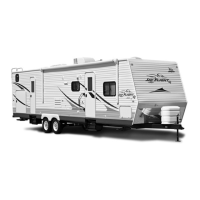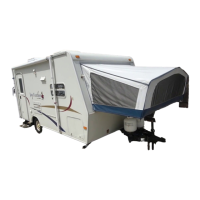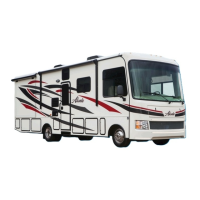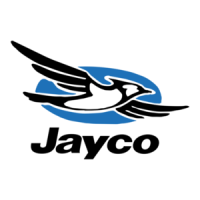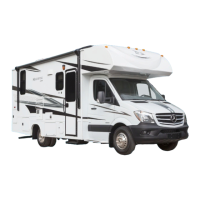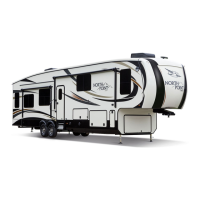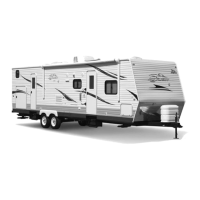PROPANE SAFETY PROCEDURE
Propane is a colorless and odorless gas that, in the liquefied state, resembles water. An
odorant (usually a sulfur compound) is added as a warning agent. If you smell propane
within the vehicle, quickly and carefully perform the procedure listed on the label below.
Propane system label
When propane container is low, occasionally there may be a concentration of an onion or
garlic-like odor, which can be mistaken for a propane gas leak. After the propane
container has been refueled, the odor will usually disappear. If not, turn off the valve(s)
and have the propane system inspected by your dealer or qualified propane service
representative
This label has been placed in the vehicle near the range, for models equipped with a
propane system.
PROPANE GAS CONTAINER
Propane “container” is a general all inclusive term used to describe a vessel that is used for
storage and delivery of propane gas. The most common of these are:
DOT (Department of Transportation) cylinders are transportable and are commonly used
on recreation vehicles. The capacity of DOT propane cylinders is expressed in pounds.
DOT propane cylinders are required to be removed from the recreation vehicle for filling
and must be filled by weight by a qualified propane facility. DOT Propane cylinders are
equipped with an OPD or Over Fill Protection Device designed to reduce the potential of
overfilling. DOT propane cylinders are also equipped with an ACME service valve that is
for connection of the TYPE 1 ACME pigtail hose assembly to the RV two-stage regulator.
The TYPE 1 ACME pigtail hose assembly is a wrenchless, user friendly, right hand
threaded connector that features a thermally sensitive sleeve and excess flow device. Max
output is 200,000 BTU/hr. It is used to connect propane cylinders to regulators, hoses and
other fittings. It is not for use on gas grills and other low pressure devices. DOT cylinders
equipped with an OPD and ACME type 1 service valve are identified by the triangular
service valve knob.
DOT cylinders are typically marked with “top” or an arrow to indicate the correct
orientation of the cylinder(s). Do not mount, store or transport any cylinder other than the
in proper position indicated.
7-2
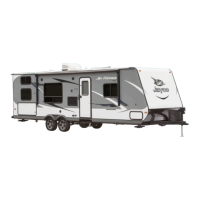
